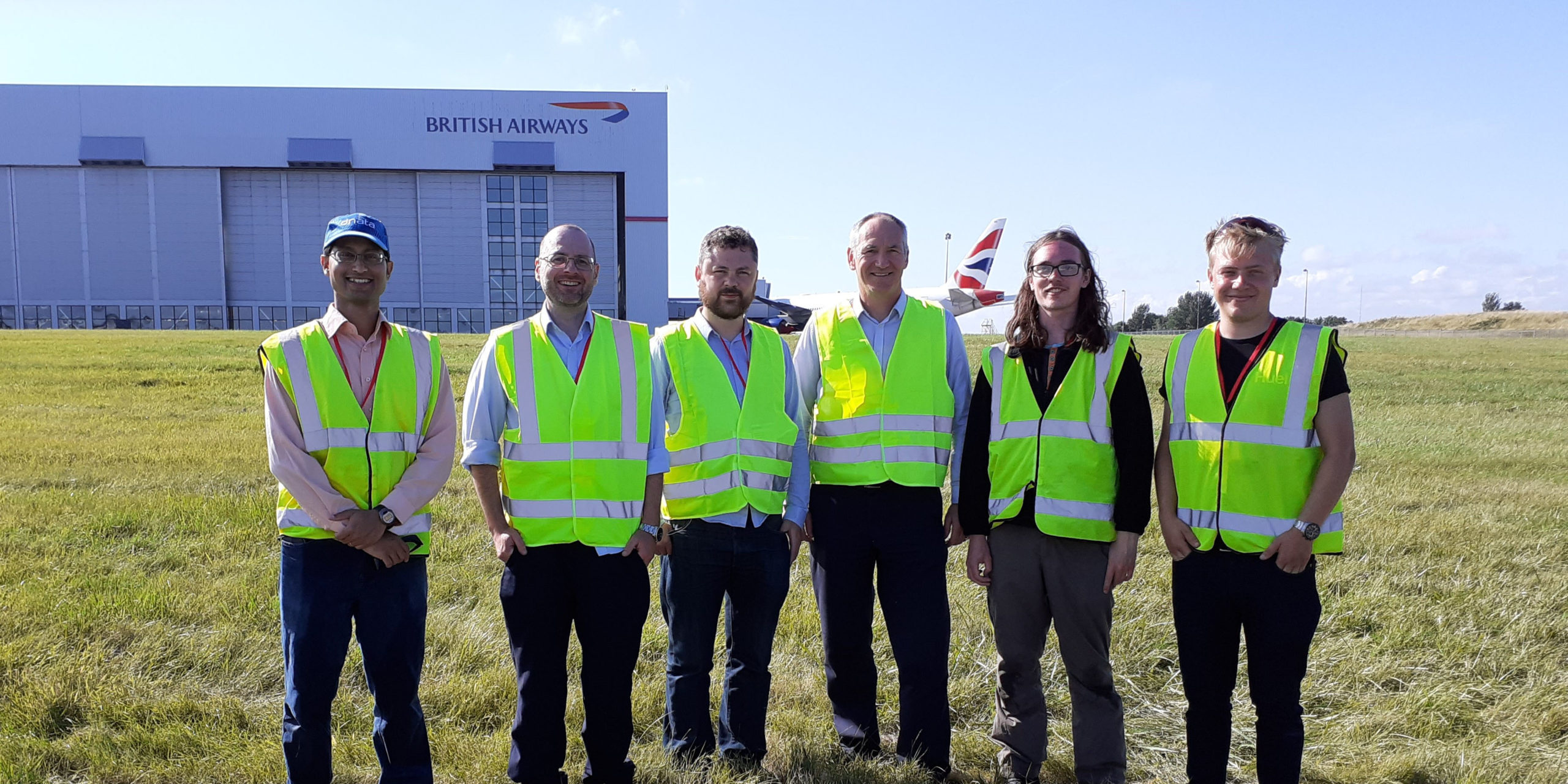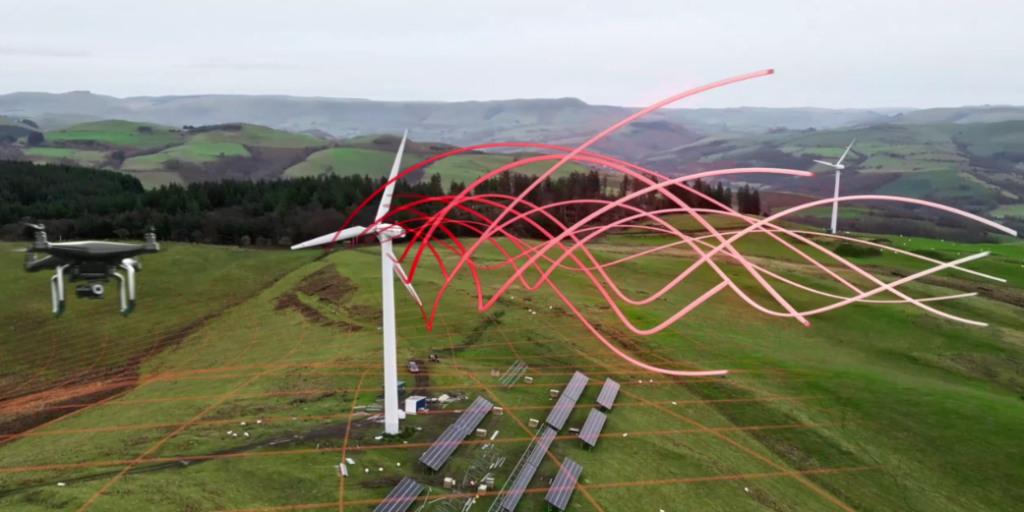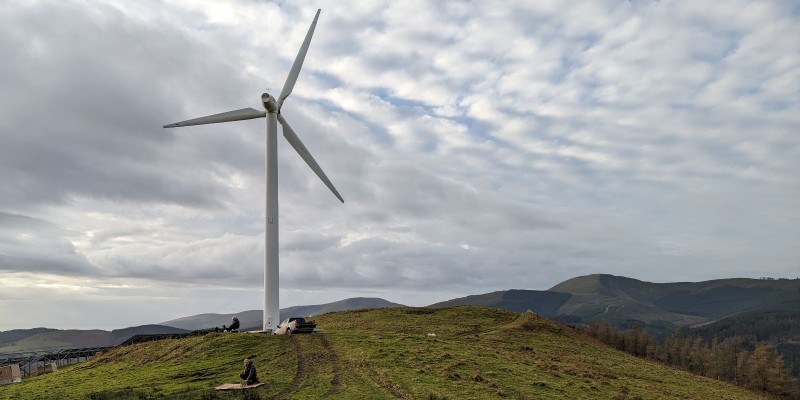
The future of flight is one of the hot topics of the time, with the pressing need to reach net-zero, create the next generation of aviation systems, and the opportunity to position the UK as a leader on the global stage. Zenotech is at the heart of these innovations, winning two Future Flight Challenge awards funded by UK Research and Innovation through the Industrial Strategy Fund.
Wales is flying high
With just 5% of the UK population, Wales has around 10% of the UK’s aerospace industry. Six projects which won a Future Flight Challenge have Welsh companies involved, including Snowdonia Aerospace (SA) and FlareBright, a partner of Zenotech. (FlareBright are pictured above at Cardiff Airport with Zenotech).
What is the future of flight?
When we think of future flight, it’s the drive for lower carbon at affordable costs and alternative fuels but it’s also about connectivity and how flight can assist other sectors from healthcare and the emergency services to logistics. With safety such a priority for unmanned drone flight, Wales is also well-positioned to provide testing areas for future flight innovations.
Spotlight on key projects
Warrior
Based in the Swansea area, CEO of Warrior, James Labouchere has a background in the manufacturing of extreme yachts including round-the-world competitions. James started building aircraft at a young age, and he won the South West England Young Engineer for Britain for his first build. In addition, he designed and built the world’s fastest symmetric land yacht.
Warrior has developed a series of technologies that enable improvements to seaplanes and amphibians using new materials suited to saltwater, which can handle rough oceans. This will include hybrid and zero-emission specifications for short-haul journeys. They also reduce footprints via applications for reduced carbon commercial flights, relieving airfields, as well as offering support for the emergency services.
In addition to the seaplanes, they are also developing the GULL, a series of unmanned platforms, which combine the abilities of both aerial (UAVs) and surface vehicles (USVs) in one (UXV). Its ability to switch between aerial and surface could increase the range of maritime operations, lower the cost, and improve efficiency.
BEHA
Another exciting future flight project is the Bio Electric Hybrid Aircraft (BEHA) in which Swansea University plays a significant role. Currently in development, the BEHA will be a clean and quiet aircraft using electric motors to power take-off and land – the part of a flight with the most noise and carbon emissions. When it is in the air moving at around 230mph, the plane will switch to its turbogenerator, which will be powered by biofuel. Solar panels will also play a part in recharging the motors, ready for the descent.
The BEHA, developed by Faradair Aerospace, a UK start-up headed up by founder and CEO Neil Cloughley, has recently expanded its relationship with the University of Swansea and Dr Ben Evans, Associate Professor in Aerospace Engineering.
The partnership has seen the university become a training ground as Faradair develops the tech for BEHA. The students benefit from this real-world industry experience and graduate opportunities, and the university can use their world-leading aerodynamic modelling and HPC to drive civil aviation forward.
DragonFLY – hybrid-electric propulsion system for regional aircraft
Led by Rukshany Navaratne, DragonFly is a hybrid-electric propulsion system development project funded by the Welsh European Funding Office, European Regional Development Fund (ERDF), and seven industrial partners. Instead of only being powered by fossil fuels, electric and hybrid-electric systems allow aircraft engines to generate power from traditional fuels, non-fossil fuels, or electricity. Hybrid electric propulsion systems are the first step to an electric flight future and reduced carbon emissions.
SafeZone – FlareBright and Zenotech
Zenotech is working with our partners FlareBright on a world-first project which will make drone flight viable in the cityscape, allowing UAVs to adapt their route as they fly through wind changes. We have just completed our second round of more advanced and successful trials at Cardiff Airport, which took place within the ‘manoeuvring area’ of the airport.
SafeZone is a game-changer for the future of safe drone flight. With safety measures in place, urban unmanned drones can ease congestion, improve sustainability and transform the capability of the emergency services and logistics.
SafeZone is part of the Future Flight Challenge, delivered by UK Research and Innovation (UKRI), and designed to position the UK as a world leader in aviation.
Innovative flight tech in Wales appears to be soaring high, and we look forward to hearing more about these technological advances as they move forward.
For more on the Future of Flight, sign up for our newsletter.



![SafeZone in full flight for drone safety [video] SafeZone in full flight for drone safety [video]](https://zenotech.com/wp-content/uploads/2023/11/header-Zenotech-article.jpg)